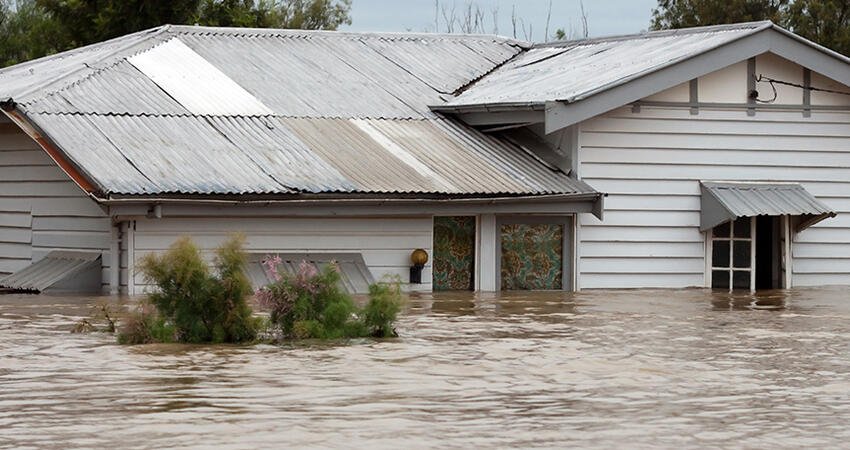
Rising Flood Risks Call for Federal and Community Solutions
by Maya Brennan
For households, communities, and the federal budget, the frequency of serious floods is cause for alarm. More than 6.9 million homes across the United States are in the 100-year floodplain, and another 6 million are in the expanded 500-year floodplain. Often these properties are owned or rented by low-income households who may be less able to withstand a disaster. Every state is affected, from the coastal to the mountainous to those in the vast Mississippi River watershed.
As Congress considers the reauthorization of the National Flood Insurance Program (NFIP), the program’s goals and challenges are as important to understand as the risks that vulnerable homes and neighborhoods face. The NFIP was created nearly 50 years ago to encourage risk mitigation and expand flood insurance, with the ultimate goal of containing the cost of flood-related assistance from the Federal Emergency Management Agency (FEMA).
NFIP premiums are intended to cover any insurance claims plus many of the program’s operating expenses. If the premium pool is not sufficient to pay claims, FEMA borrows the difference from the US Department of the Treasury. Before 2005, the program’s finances were generally sound—an occasional debt would be paid off in subsequent years. But, since the devastating hurricanes of 2005, the program has been under water. Currently, FEMA owes Treasury $24.6 billion. Any time the program starts to pay off its debt, another high-cost storm occurs and the debt rises again.
Despite mounting costs—not just to the federal government but to human lives—more than 30,000 severe repetitive loss properties (SRLPs), residential and nonresidential, are in a cycle of flood, rebuild, and flood again. Eighty-one percent of these are single family homes. For these homeowners, it is easier to get support to rebuild than to relocate. According to the National Resources Defense Council, every $100 in rebuilding funds from FEMA has been met with just $1.72 in relocation assistance. Yet, among single-family SRLPs, the typical cost of just one more flood would push the average total damages over the average home value. For lower-cost homes—those valued at less than $250,00—it would already have been cheaper for the federal government to buy-out the owners.
Though the research on flood risks by race or income is still fairly thin, the evidence available suggests that the popular perception of disparate impacts by race and income holds true. A 2006 study conducted as part of an NFIP evaluation found that Census blocks with more black households had higher flood damages, after controlling for income, than other blocks. The study also found that households living in flood hazard areas were more likely to have incomes less than $30,000 or greater than $75,000. This suggests that households with higher incomes may live in flood zones willingly with the assurance of low-cost flood insurance, but lower-income households may be in flood zones for work or because they cannot afford to live elsewhere. Other research has found that flood insurance pricing is regressive—with lower premiums for higher value properties. The current structure of NFIP is not helping reduce the disparate impacts of flooding and may instead effectively subsidize waterfront living by households of means.
Recommendations for flood insurance reform from the Union of Concerned Scientists, the National Housing Conference, the SmarterSafer Coalition, the Cato Institute, and the US Government Accountability Office (GAO) have a lot in common. Flood insurance will not do right by the federal taxpayer or people living in floodplains unless policies have risk-based pricing, means-tested subsidies for low-income homeowners, and expanded risk mitigation incentives. There is also consensus that private-sector flood insurance should be on the table, although the various stakeholders disagree about whether private insurance should be simply an acceptable option or fully replace NFIP. GAO further suggests that, as part of the reforms, Congress should eliminate NFIP’s debt so that the program can build an effective reserve or invest in other programmatic needs.
Though current dialogue centers on federal policy reform, flood mitigation is a land-use issue, and land use is local. Examples from the 100 Resilient Cities show that flood mitigation efforts can take many forms. Chief resilience officers in New Orleans, New York, and Boston are developing strategies that include attractive civic amenities that also provide overflow capacity for flood waters and work to connect and strengthen isolated and vulnerable areas. Meanwhile, Iowa cities like Cedar Rapids and Dubuque show that communities do not have to wait to have a chief resilience officer to engage in thoughtful and strategic efforts to reduce flood risks and advance equity.
A sound approach to reducing flood risks should rethink both local land use and flood insurance to ensure that all of our tools are working together to deliver homes, communities, and, indeed, program budgets that are built to last and designed for equity. Tackling risk mitigation from all sides will not only help people in harm’s way but also benefit the federal purse.


